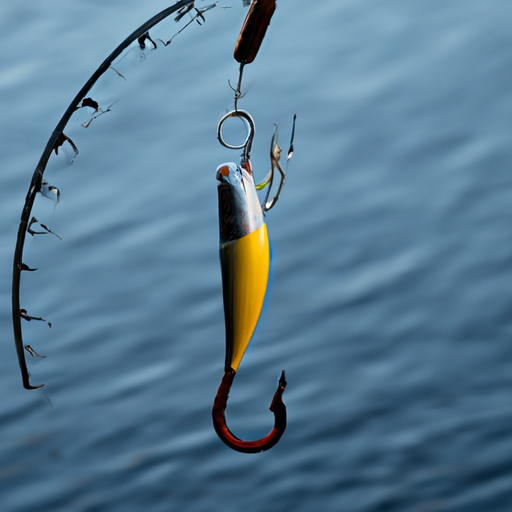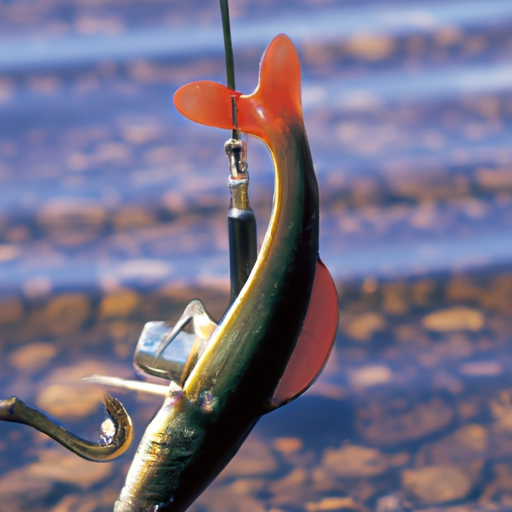If you’re new to the art of catch and release fishing, then “The Dos And Don’ts Of Catch And Release For Beginners” is the perfect guide for you. Packed with essential tips and tricks, this product is designed to help you learn the proper techniques for releasing fish back into their natural habitats. Whether you’re an avid angler looking to improve your conservation practices or a beginner seeking advice on how to minimize harm to fish, this comprehensive guide has got you covered. With easy-to-understand instructions and expert advice, you’ll be well-equipped to enjoy the sport of fishing while protecting the environment at the same time.
The Dos of Catch and Release
Fishing is not just about catching fish; it is also about conserving the fish population and preserving the ecosystem. Catch and release fishing is a practice that allows anglers to enjoy their sport while minimizing their impact on fish populations. However, it’s important to follow certain guidelines to ensure the success of catch and release. Here are some key dos to keep in mind when practicing catch and release.
Choose the Right Fishing Gear
Selecting the appropriate fishing gear is essential for successful catch and release. By using the right gear, you can minimize harm to the fish and increase its chances of survival after release. Here are some factors to consider when choosing your fishing gear.
Match the Gear to the Targeted Fish Species
Different fish species have different characteristics and sensitivities. It is crucial to choose gear that matches the species you are targeting. This means using the correct rod, reel, line, and bait for the specific type of fish you want to catch. Matching the gear to the targeted fish species will not only improve your chances of catching the desired fish but will also minimize stress and injury to the fish during the catch and release process.
Use Barbless Hooks
Using barbless hooks is highly recommended for catch and release fishing. Barbless hooks are designed to make hook removal easier and less damaging to the fish. They reduce the risk of causing unnecessary injury to the fish’s mouth or throat. With barbless hooks, the fish can be released quickly and with minimal harm.
Opt for Single Hooks
Single hooks are preferred over treble hooks for catch and release fishing. Treble hooks, with their multiple points, can cause more damage to the fish’s mouth and increase the likelihood of injury. On the other hand, single hooks are easier to remove, resulting in less harm to the fish. Opting for single hooks is a responsible choice when practicing catch and release.
Avoid Treble Hooks
As mentioned earlier, treble hooks should be avoided when participating in catch and release fishing. While they may increase the chances of hooking a fish, treble hooks also increase the risk of harming the fish. The multiple points on treble hooks can cause significant damage, making hook removal more difficult and potentially fatal for the fish. It is best to choose single hooks to minimize harm to the fish during catch and release.
Use Appropriate Line Strength
Using the right line strength is crucial for successful catch and release. A line that is too light may increase the chances of the fish breaking off during the fight, leading to unnecessary stress and exhaustion. On the other hand, a line that is too heavy can cause excessive pressure on the fish, increasing the risk of injury. It is important to use a line strength that matches the size and strength of the fish you are targeting. This will ensure that the fish can be landed safely and released with minimal harm.
Handle the Fish with Care
Once you have successfully caught a fish, it is important to handle it with care to minimize stress and injury. Proper handling can significantly increase the chances of survival for the fish after release. Follow these guidelines to ensure that you handle the fish properly.
Wet Your Hands Before Touching the Fish
Before handling the fish, it is crucial to wet your hands to minimize the removal of its protective slime. The slime on a fish’s skin acts as a protective barrier against infections, parasites, and other harmful substances. By wetting your hands, you reduce the risk of damaging this protective layer and ensure the fish’s well-being.
Support the Fish’s Weight Properly
When lifting a fish out of the water, it is important to support its weight properly. Using both hands, cradle the fish gently and avoid letting it hang by its mouth or unsupported. By providing proper support, you minimize the risk of injuring the fish’s internal organs and promote its chances of survival.
Avoid Squeezing or Applying Excessive Pressure
Fish are delicate creatures, and excessive pressure or squeezing can cause internal injuries. It is crucial to handle the fish gently and avoid applying unnecessary force. Mishandling the fish can result in broken bones, damaged organs, or even death. Treat the fish with respect and remember that your goal is to release it unharmed.
Minimize Time Out of Water
When removing the fish from the water, it is important to minimize the time it spends out of its natural habitat. Exposure to air for extended periods can be stressful for the fish and decrease its chances of survival after release. As such, it is important to have all your equipment ready and remove the hook quickly and efficiently to minimize the fish’s time out of the water.
Remove Hooks Safely
Removing the hook from a fish’s mouth or throat can be challenging, but it must be done carefully to avoid injury. Use a pair of needle-nose pliers or a hook remover tool to gently and swiftly remove the hook. It is important to avoid yanking or pulling forcefully, as this can cause significant harm. Take your time and be patient, ensuring that the hook is removed with minimal damage to the fish.

Use Proper Fishing Techniques
Using proper fishing techniques is essential for a successful catch and release experience. Employing the right methods not only increases the chances of catching a fish but also reduces stress and injury to the fish. Here are some techniques you should keep in mind.
Avoid Deep Hooking
Deep hooking occurs when the fish swallows the bait or hook, making it difficult to remove without causing harm. To avoid deep hooking, be attentive to the fish’s behavior and practice timely hookset techniques. Setting the hook properly when you feel a bite can increase the chances of hooking the fish in the lip or mouth, making removal easier and less damaging.
Avoid Excessive Playing Time
Playing a fish for too long can exhaust it and increase its chances of injury or death. The longer the fight, the more stress the fish experiences, decreasing its likelihood of survival after release. It is important to have the appropriate equipment and sufficient skill to land the fish efficiently. By minimizing the playing time, you can reduce stress and increase the chances of a successful release.
Use a Landing Net When Possible
Using a landing net is highly recommended for catch and release fishing. It allows you to secure the fish quickly and avoid excessive handling. When using a landing net, be sure to use a net with soft mesh to minimize the risk of damaging the fish’s scales or fins. Additionally, always wet the net before use to reduce the removal of the fish’s protective slime and promote its well-being.
Avoid Damaging the Fish’s Eyes or Gills
During the catch and release process, it is crucial to be mindful of the fish’s sensitive areas, such as the eyes and gills. Avoid touching these areas as much as possible, as they are delicate and can easily be injured. A damaged eye or gill can significantly reduce the fish’s chances of survival in the wild. Handle the fish with care and focus on minimizing any potential harm.
Don’t Play the Fish to Exhaustion
Playing a fish until it is completely exhausted can have severe consequences. Exhaustion can weaken the fish’s immune system, making it more susceptible to diseases and infections. Additionally, an exhausted fish may struggle to recover after release, decreasing its survival rate. It is important to gauge the fish’s strength and fight accordingly, striking a balance between enjoyment and responsible fishing.
Revive the Fish Before Release
After successfully catching and handling the fish, it is crucial to take the necessary steps to revive it before release. Reviving the fish helps restore its strength and ensures its ability to survive after being released. Here are some key guidelines to follow when reviving a fish.
Keep the Fish in the Water
When reviving a fish, it is important to keep it in the water at all times. Placing the fish back in its natural habitat helps it breathe and start recovering. Avoid exposing the fish to air, as this can stress the fish and hinder its revival process. Keep the fish in the water, either by holding it gently or by using a net or livewell.
Move the Fish Gently to Help Oxygenate Its Gills
To aid in the fish’s revival, gently move it back and forth in the water. This motion helps oxygenate its gills, allowing it to breathe properly. Avoid vigorous movements or splashing, as this can cause further stress to the fish. Gentle and slow movements are key to assisting the fish in its recovery.
Hold the Fish Upright
While reviving the fish, hold it in an upright position. This ensures that water flows through its gills, providing essential oxygen. Holding the fish correctly prevents water from entering its gills and helps it recover more effectively. Always support the fish’s body while keeping it upright, ensuring it remains balanced and stable.
Wait Until the Fish Holds Steady
As you revive the fish, pay attention to its behavior and movements. Wait until the fish shows signs of steadiness and strength before releasing it. This can be observed when the fish begins to swim on its own, maintaining balance and control. Releasing a fish before it has fully revived may hinder its survival chances. Patience is key when reviving a fish.
Release the Fish in Calm Water
When it’s time to release the fish, choose a calm and undisturbed area of the water. This allows the fish to regain its strength and swim away without encountering additional stress or obstacles. Avoid releasing the fish near strong currents, rapids, or areas with heavy fishing pressure. Selecting an appropriate release location contributes to the fish’s chances of survival in its natural environment.

Follow Local Fishing Regulations
To ensure the long-term sustainability of fish populations and ecosystems, it is essential to adhere to local fishing regulations. These regulations exist to protect fish stocks, promote ethical fishing practices, and conserve natural habitats. Here are some key considerations when it comes to following local fishing regulations.
Check the Fishing Season for Your Targeted Species
Fishing seasons are established to protect fish during their sensitive spawning and reproductive periods. It is crucial to know the fishing season for the specific species you are targeting. By fishing only during the designated season, you contribute to the preservation of fish populations and their overall health.
Know the Size and Bag Limits
Size and bag limits are set to prevent the overexploitation of fish populations. They specify the minimum and maximum sizes of fish that can be kept and the maximum number of fish a person can catch in a given time period. Familiarize yourself with the size and bag limits of your targeted fish species to ensure compliance with regulations and assist in maintaining sustainable fish populations.
Be Aware of Specific Catch and Release Requirements
Some areas may have specific catch and release requirements for certain fish species. These requirements may include specific gear types, hook restrictions, or specific handling guidelines. It is important to familiarize yourself with any specific catch and release requirements in your fishing location. Adhering to these guidelines ensures the effective conservation and management of fish populations.
Understand Protected Species and Closed Areas
Protected species and closed areas are designated to safeguard vulnerable or endangered fish populations and their habitats. It is crucial to familiarize yourself with the list of protected species in your fishing region and any closed areas where fishing is prohibited. By respecting these regulations, you contribute to the conservation efforts aimed at preserving these species and their habitats.
Obtain Fishing Licenses and Permits
Fishing licenses and permits are legal requirements in many jurisdictions. They help regulate fishing activities, monitor fish populations, and fund conservation efforts. Before engaging in catch and release fishing, ensure that you have the necessary licenses and permits from the appropriate authorities. By obtaining the required documentation, you demonstrate your commitment to responsible fishing practices and contribute to the well-being of fish populations.
The Don’ts of Catch and Release
While it is important to know what to do when practicing catch and release, it is equally important to understand what not to do. Avoiding certain practices can greatly minimize harm to fish and increase their chances of survival. Here are some key don’ts to keep in mind during catch and release.
Don’t Use Inappropriate Fishing Gear
Using inappropriate fishing gear can be detrimental to fish populations and their habitats. Avoid using oversized hooks, as they can cause severe injury and increase mortality rates. Similarly, avoid using nets with large holes that may entangle or harm the fish. Always select the appropriate gear for the size and species you are targeting to ensure responsible catch and release.
Don’t Handle the Fish with Dry Hands
Dry hands can remove the protective slime coating from a fish’s skin, leaving it susceptible to infections and diseases. Always moisten your hands before touching a fish to maintain the integrity of its slime barrier. Keeping a wet towel or wet wipes handy can also help to ensure that your hands remain moist throughout the catch and release process.
Don’t Squeeze or Mishandle the Fish
Fish are delicate creatures, and mishandling them can cause severe harm. Avoid squeezing or applying excessive pressure, as this can cause internal injuries or damage to their vital organs. Treat the fish with care, using gentle movements and providing proper support. By avoiding the mishandling of fish, you promote their well-being and increase their chances of survival after release.
Don’t Keep the Fish Out of Water for Too Long
Proper handling techniques involve minimizing the time a fish spends out of water. Extended exposure to air can stress the fish and decrease its likelihood of survival. Try to have all your equipment ready and remove the fish from the water for the shortest possible duration. By minimizing the time out of water, you mitigate stress and increase the chances of a successful release.
Don’t Neglect to Remove the Hooks Properly
Removing hooks properly is crucial for the well-being of the fish. Neglecting to do so can cause significant harm and increase mortality rates. Always carry needle-nose pliers or dehooking tools to safely remove the hook. Avoid yanking or pulling forcefully, as this can cause severe damage. Take the necessary time and care to remove the hook with minimal harm to the fish.
Use Needle-Nose Pliers or Dehooking Tools
When removing hooks, it is essential to have the appropriate tools on hand. Needle-nose pliers or dehooking tools are designed to facilitate the safe removal of hooks from a fish’s mouth or throat. Using these tools minimizes the risk of injury and increases the fish’s chances of survival after release. Always carry these tools in your fishing kit to ensure responsible catch and release.
Avoid Yanking or Pulling on the Hooks
Yanking or pulling forcefully on a hook can cause severe damage to the fish’s mouth or throat. This can lead to internal injuries, infections, or even death. Instead, apply gentle and steady pressure while using your chosen tool to remove the hook. By avoiding forceful removal, you significantly reduce harm to the fish and increase its chances of survival.
Remove Hooks with Minimal Damage
The goal when removing hooks is to cause minimal damage to the fish. Fishing hooks can injure the fish’s mouth, throat, or other internal organs if not removed carefully. Take your time and be patient, ensuring that the hook is extracted in a way that minimizes harm. Handling the fish gently and using the appropriate tools can greatly contribute to successful hook removal.
Use Disgorger Tools for Deeply Swallowed Hooks
In cases where a fish has deeply swallowed the hook, using a disgorger tool is highly recommended. Disgorger tools are designed to reach deep into a fish’s throat and safely remove the hook without causing further damage. Attempting to manually remove deeply swallowed hooks can be risky and may result in harm to the fish. Always have a disgorger tool available to handle such situations responsibly.
Don’t Leave Any Tackle or Line in the Fish
Leaving tackle or fishing line in a caught fish can have severe consequences. It can cause injuries, infections, or entanglement, leading to reduced survival rates. Always ensure that all tackle and fishing line are removed from the fish before release. By being diligent in removing any remnants of your fishing gear, you minimize harm and contribute to the fish’s chances of thriving in its natural environment.
In conclusion, catch and release fishing is a rewarding and responsible way to enjoy the sport while preserving fish populations and their habitats. By following the dos and don’ts of catch and release, you can minimize harm to fish, increase their chances of survival, and contribute to the long-term sustainability of our natural resources. Remember to choose the right fishing gear, handle the fish with care, use proper fishing techniques, revive the fish before release, and always follow local fishing regulations. Happy fishing and responsible catch and release!





